Effective immediately masking is required for everyone when present on all inpatient units, in the Emergency Department (ED), the Urgent Care Centre (UCC), and the Children’s Outpatient Centre (COPC).
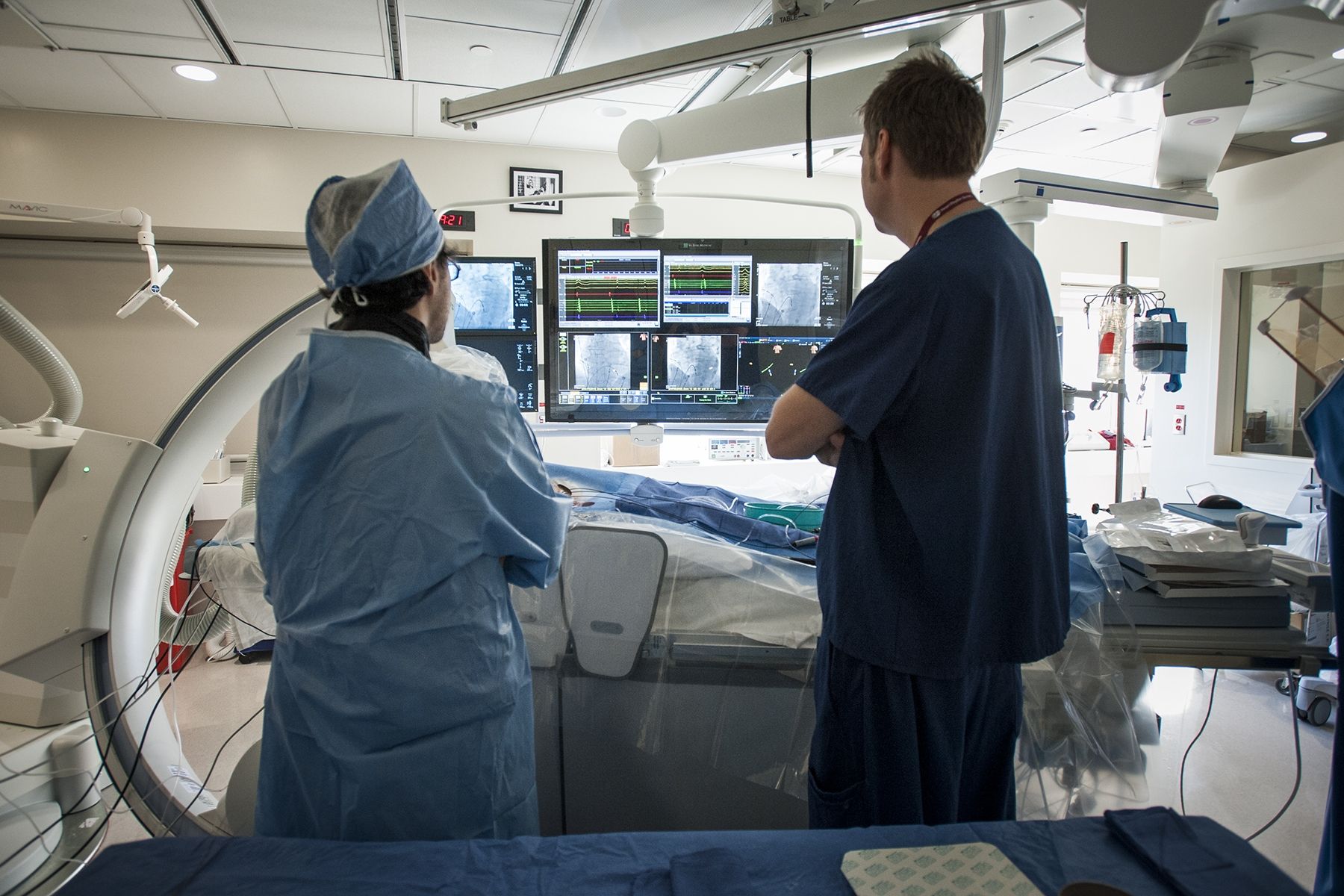
KGH cardiac patients with heart rhythm disorders are the first in Ontario to be treated with a new medical technology similar to the global positioning systems (GPS) that drivers use to determine the location of their vehicle on a map.
MediGuide Technology offers KGH medical teams the ability to see real-time, three-dimensional pictures of the precise location of their catheters and tools while inside the heart.
“This technology provides a high degree of detail and accuracy during image-guided procedures for heart rhythm disturbances such as atrial fibrillation or ventricular tachycardia,” says Dr. Damian Redfearn, Electrophysiologist and Director of KGH’s Heart Rhythm Service. “The GPS-accuracy potential is second-to-none. For our cardiac patients and their families, this means that their procedures are optimized for success.”
The technology is housed within KGH’s newly-designed, $4.5-million electrophysiology (EP) lab which began treating patients in September and celebrated its official opening this week.
The lab will also enhance patient care by reducing wait times and cancellations and providing a more seamless patient journey. “Previously, patients had to be transported from room to room, which was inefficient and, infrequently, their procedures could be subject to rescheduling if an operating room was required for an emergency case,” says Dr. Redfearn. “Because the EP lab is dedicated to completing these specific procedures, we can provide patients with more efficient and rapid care.”
Patient Dan Bone, 71, was one of the first to experience the new lab. Diagnosed with ventricular arrhythmia, a life-threatening condition that affected his heart function and ventricular tachycardia which resulted in heart rates of between 140-200 beats per minute, Bone required surgical ablation to restore normal heart rhythm.
“I was reassured when I saw the highly-professional team, the lab and all the brand new equipment,” says Bone. “I felt at ease knowing that I was in good hands and appreciated that my team members took the time to explain what was happening to me throughout.”
Today, Bone’s heart rate is stable and he is experiencing a better quality of life. “I’ve not had an arrhythmia since. My heart rate is predictable and I’m back to doing the things I enjoy,” he says.
That’s exactly the kind of outcome that our cardiac teams are working to provide for the 400-plus patients who will receive treatment here this year. “The dedication and support of the whole cardiac team made this state-of-the-art lab – that rivals electrophysiology labs around the world – a reality,” says Julie Caffin, Cardiac Program Operational Director. “This accomplishment will benefit both patients and staff and is truly one that everyone can be proud of.”
Facilitated in partnership with Jude Medical and made possible through capital investment from KGH, along with industry funding and generous support by the William James Henderson Foundation and patrons of the 2011 KGH Black Tie Evening, through UHKF, the lab will serve as a demonstration site for professors, physicians, cardiac technologists and scientists visiting from across the globe.
Gallery
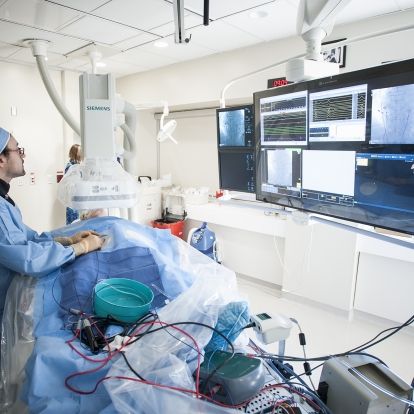
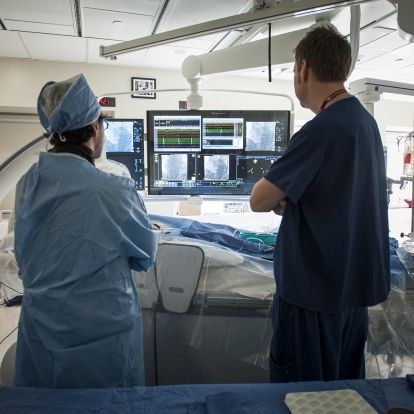
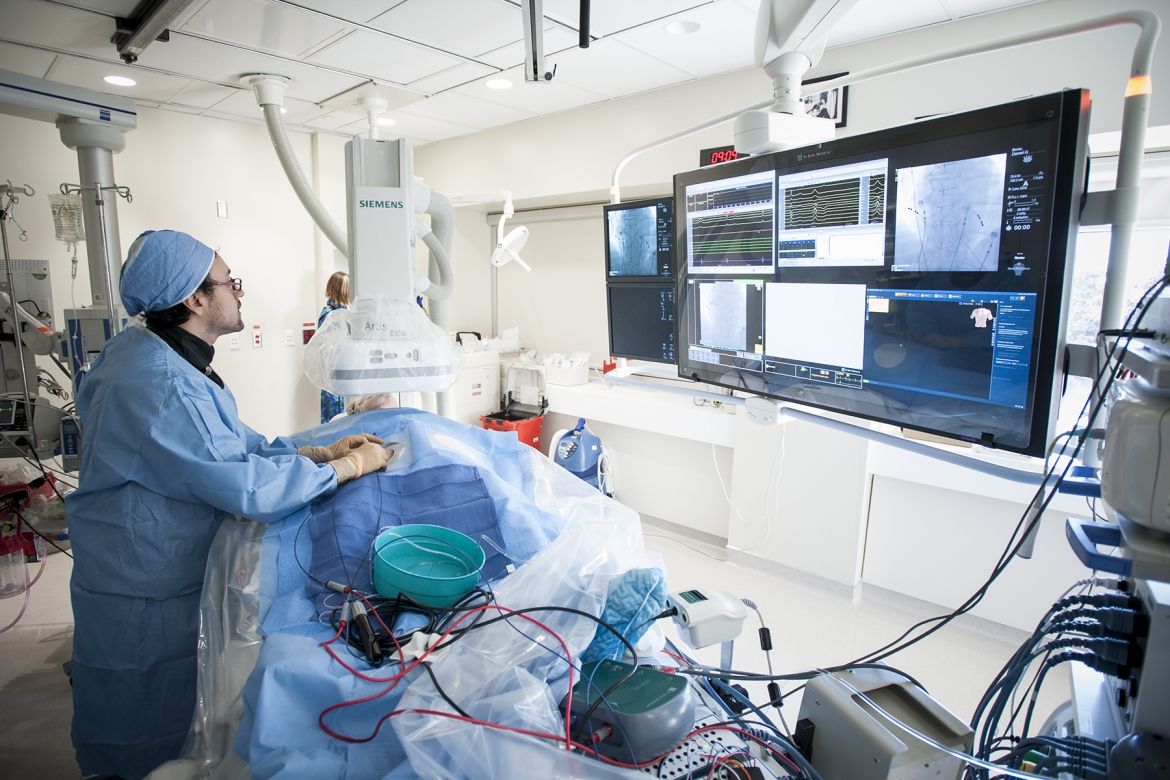
Kingston General Hospital new electrophysiology (EP) lab, the first in Ontario to use a GPS-like technology during cardiac procedures called MediGuide.
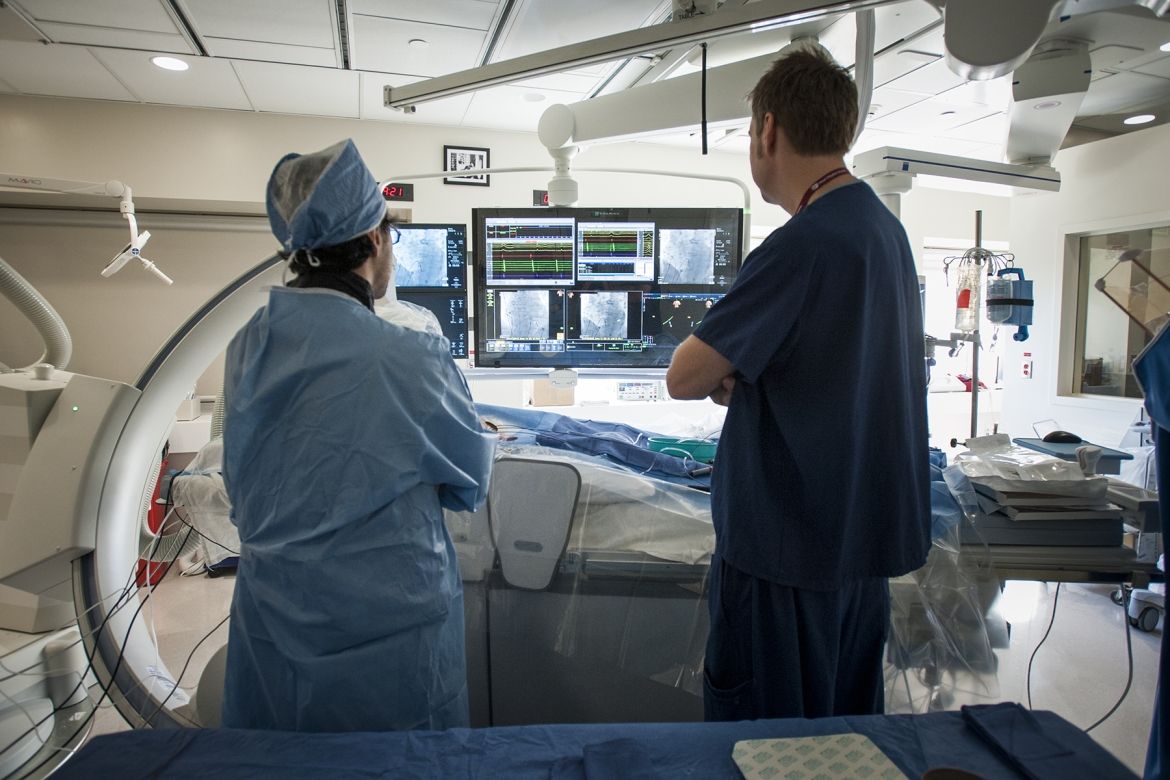
Kingston General Hospital new electrophysiology (EP) lab, the first in Ontario to use a GPS-like technology during cardiac procedures called MediGuide.



